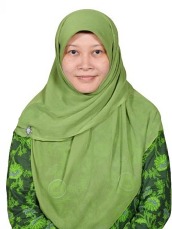Study of Problems and Feasibility of Coffee Business
DOI:
https://doi.org/10.30997/jagi.v9i2.8537Keywords:
Feasibility of coffee business, journal review, problems of coffee businessAbstract
Coffee is a mainstay of the plantation sector which has long been a driving force for the economy in Indonesia which has export value. The still not optimal production of coffee in Indonesia has a lot to do with productivity. Factors causing the low productivity of Indonesian coffee include lack of mastery of Good Agricultural Practices (GAP) and Good Handling Practices (GHP), low-quality beans at the farm level, attacks by plant-disturbing organisms, old plants that are no longer productive and farmer institutions that are still weak. Seeing the conditions of the existing problems, the development of coffee businesses needs to be studied for the feasibility of the business. The method used in conducting a business feasibility financial analysis is Net Present Value (NPV), Internal Rate of Return (IRR), Net B/C Ratio, Gross B/C Ratio, R/C Ratio , Return Of Investment (ROI), Payback Period and Profitability Index (PI). The method used is literature study by conducting a review of ten journals related to research. All journals use Net Present Value (NPV), Internal Rate of Return (IRR) and Payback Period calculations. Net B/C Ratio is used by eight journals. Profitability Index (PI) is used by two journals. The Gross B/C Ratio is used by the three journals. R/C Ratio and , Return of Investment (ROI) are only used by one journal. The results of this study are expected to be a reference in assessing the feasibility of the coffee business.
References
Jumingan (2018). Studi Kelayakan Bisnis. Bumi Aksara
Kementrian Pertanian. (2014). Pedoman Teknis Budidaya Kopi Yang Baik (Good Agriculture Practice/GAP On Coffe). Jakarta
Khalifatullah, D., Deliana., Y & Setiawan. I . (2022). Analisis Kelayakan Usaha Pada Usaha Tani Kopi Arabika Di Kelompok Tani Hutan Giri Senang Dan Kelompok Tani Sunda Buhun. Jurnal Agrica Vol.14 No.2/Oktober 2021. Mimbar Agribisnis: Jurnal Pemikiran Masyarakat Ilmiah Berwawasan Agribisnis, 8(2): 725-741. htpp://dx.doi.org/10.25157/ma.v8i2.7226.g5090
Meisetyani, R., Indra, & Syakur. (2021). Analisis Skala Usaha Dan Finansial Usahatani Kopi Arabika (Coffea arabica) Di Kabupaten Gayo Lues. Jurnal Agrica, 14(2), 131-139 http://ojs.uma.ac.id/index.php/agrica.
Miftah, H., Aviah, S. M., Mubarokah, S. L., Novita, I., & Pramartaa, I. Q. (2023). Analysis of The Marketing Efficiency of Curcuma in The Medicine Plant Processing Industry. Indonesian Journal of Social Research (IJSR), 5(2), 157-167.
Miftah, H., Marfu'ah, E., Mubarokah, S. L., & Yoesdiarti, A. (2023). Analysis of Marketing Efficiency F Salak Pondoh Commodities (Salacca Edulis Reinw) for Sale in Traditional Markets in Bogor City. Formosa Journal of Applied Sciences, 2(5), 859-872.
Mubarokah, S. L., & Miftah, H. (2023). Prospects of Indonesian Rice Self-sufficiency As a Food Security Effort Using a Dynamic System Model. Jurnal Pertanian, 14(2), 65-80.
Pahlevi, R., Zakaria, W. A., & Kalsum. U. (2014). Analisis Kelayakan Usaha Agroindustri Kopi Luwak Di Kecamatan Balik Bukit Kabupaten Lampung Barat. JIIA, 2(1). 48-55. http://dx.doi.org/10.23960/jiia.v2i1.560.
Permata, L.T.A., Prasmatiwi,F. E., & Abidin. Z (2022). Kelayakan Usahatani Kopi Arabika di Kecamatan Way Rantai Kabupaten Pesawaran. Journal of Food System and Agribusiness, 3(1), 12-24. http://dx.doi.org/10.25181/jofsa.v6i1.2118
Ruslan, M. R., Yoesdiarti, A., & Miftah, H. (2020). Analisis preferensi konsumen terhadap kopi bogor di tiga kedai kopi bogor. Jurnal Agribisains, 6(2), 101-114.
Siadari, U., Batubara, H. D. A., Pane, P. Y. A., & Shanty, A. M. M. (2022). Analisis kelayakan usaha tani Kopi Arabika di Kabupaten Simalungun. SOSIOHUMANIORA: Jurnal Ilmiah Ilmu Sosial Dan Humaniora, 8(2), 225-232.
Suliyanto (2010). Studi Kelayakan Bisnis : Pendekatan Praktis. Yogyakarta.
Sumantri., Yoesdiarti, A., & Miftah. H. (2020). Studi Kelayakan Investasi Kopi Robusta (Coffea Canephora). Jurnal Agribisains, 6(1), 39-49. https://doi.org/10.30997/javi.v6i1.2805.
Surya, L.W., Sudarma, M., & Wijayanti . P.U. (2016). Nilai Tambah dan Kelayakan Usaha Pengolahan Kopi Arabika pada Unit Usaha Produktif Ulian Murni Kabupaten Bangli. E-Jurnal Agribisnis dan Agrowisata, 5(1), 1-10. https://ojs.unud.ac.id/index.php/JAA/article/view/18659.
Syakir, M & E. Surmaini (2017). Perubahan Iklim dalam Konteks Sistem Produksi Dan Pengembangan Kopi Di Indonesia. Jurnal Litbang Pertanian, 36(2). DOI: 10.21082/jp3.v36n2.2017.p77-90.
Wahyuni ,S.S., Utama, S.P., & Mulyasari. G. (2013). Analisis Kelayakan Finansial Usaha Tani Kopi Arabika Di Desa Bandung Baru Kecamatan Kabawetan Kabupaten Kepahiang. Agrisep, 11(1), 43-50. https://doi.org/10.31186/jagrisep.11.1.43-50.
Winantara, M.Y., Abu Bakar., & Puspitaningsih. R. (2014). Analisis Kelayakan Usaha Kopi Luwak Di Bali. Jurnal Online Institut Teknologi Nasional, 3(2). https://ejurnal.itenas.ac.id/index.php/rekaintegra/article/view/545
Zakaria, A. (2019). Analisis Kelayakan Finansial Usahatani Kopi Arabika (Coffea arabica) di Desa Suntenjaya Kecamatan Lembang Kabupaten Bandung Barat. Agroscience, 9(1). 34-40. https://jurnal.unsur.ac.id/agroscience/article/view/633/0
Downloads
Published
How to Cite
Issue
Section
License
Copyright (c) 2023 JURNAL AGRIBISAINS

This work is licensed under a Creative Commons Attribution-ShareAlike 4.0 International License.
Authors who publish with Jurnal AgribiSains agree to the following terms:
- Authors retain copyright and grant the journal right of first publication with the work simultaneously licensed under a Creative Commons Attribution Share-Alike 4.0 International License that allows others to share the work with an acknowledgement of the work's authorship and initial publication in Jurnal AgribiSains.
- Authors are able to enter into separate, additional contractual arrangements for the non-exclusive distribution of the journal's published version of the work (e.g., post it to an institutional repository or publish it in a book), with an acknowledgement of its initial publication in Jurnal AgribiSains.
- Authors are permitted and encouraged to post their work online (e.g., in institutional repositories or on their website) prior to and during the submission process, as it can lead to productive exchanges, as well as earlier and greater citation of published work.








